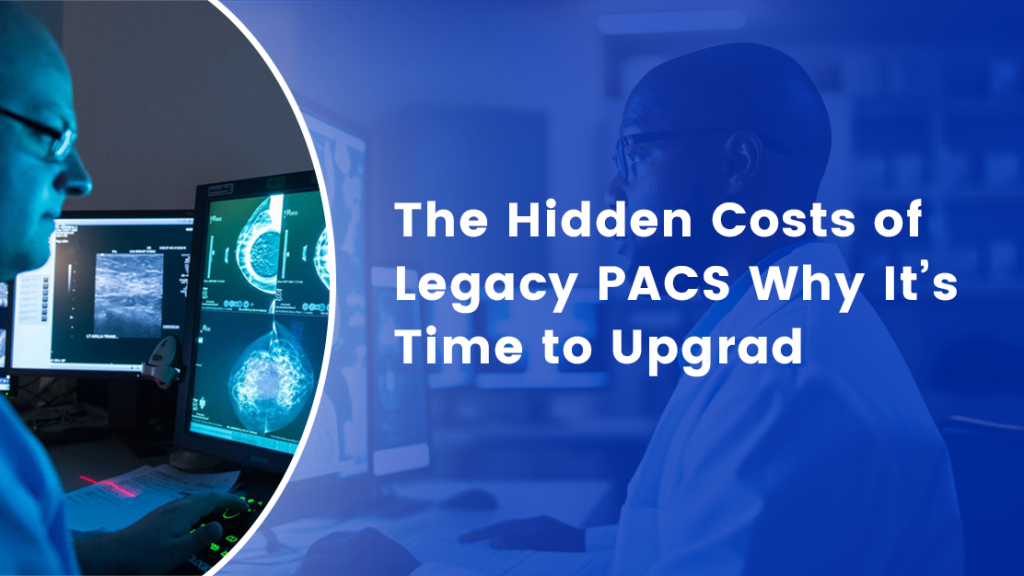In the digital era of healthcare, radiology systems play a pivotal role in diagnosis and treatment. While many hospitals and imaging centers still rely on legacy PACS (Picture Archiving and Communication Systems), these outdated systems often carry hidden costs that silently strain resources.
This article reveals the unseen burdens of traditional PACS and explains why upgrading to a cloud-based PACS—like the one offered by Nandico—is a smarter, more sustainable choice.
1. Costly Infrastructure Requirements
Legacy PACS relies heavily on local servers, physical storage units, and complex networking systems. These demand regular maintenance, dedicated IT teams, and periodic upgrades—all of which cost time and money.- Expensive setup and upgrades
- Hardware failures disrupt workflows
- High electricity and maintenance bills
2. Scalability Challenges
Older PACS platforms are not built to scale easily. As patient data increases or facilities expand, adding more storage or integrating new departments becomes complex and expensive.- Scaling requires new servers and licenses
- Physical limitations restrict storage growth
- Expanding takes weeks or months
3. Limited Access and Mobility
Legacy PACS typically works only within hospital premises. This limitation creates bottlenecks, especially for radiologists who need to review scans remotely or during emergencies.- No remote reporting options
- Difficult for multi-location collaboration
- Slows down diagnosis and treatment
4. Increased Security Risks
Many traditional PACS setups lack modern security protocols. Manual software updates, weak encryption, and outdated firewalls leave sensitive medical data vulnerable to cyberattacks.- High risk of data breach or loss
- Weak compliance with data protection laws
- No automatic backup or recovery system
5. Hidden Operational Expenses
While legacy systems may seem like a one-time investment, their operational costs quickly add up. These include unexpected service charges, licensing renewals, and the cost of IT support during outages.- Frequent technical support bills
- Long system downtimes affecting productivity
- Recurring license and upgrade costs
6. Workflow Delays and Productivity Loss
Older PACS often have slow interfaces, lag in loading images, and lack smart tools that modern radiologists need. This directly affects report turnaround times and overall departmental efficiency.- Longer time to retrieve and share images
- Staff frustration with outdated tools
- Delays in patient diagnosis
7. Integration Limitations
Healthcare environments today depend on interconnected systems. Legacy PACS struggles to integrate seamlessly with other platforms like RIS (Radiology Information Systems), EHRs, or AI-powered diagnostic tools.- Poor data sharing between systems
- Increased manual data entry
- Lack of automation
8. Energy and Space Drain
Running local servers 24/7 consumes a significant amount of power and demands dedicated physical space, which could be better used for patient care.- High energy consumption
- Cooling systems needed for server rooms
- Reduced usable clinical space
Why Healthcare Providers Are Choosing Nandico PACS
At Nandico, we help healthcare providers move beyond outdated systems and embrace modern imaging solutions that are secure, efficient, and cost-effective. With Nandico PACS, you benefit from:- Instant access from any location
- Secure, encrypted storage
- AI-ready workflows
- Flexible subscription models
- Zero infrastructure headaches
Conclusion
The outdated architecture of legacy PACS is no longer suited for the demands of modern radiology. The hidden costs—financial, operational, and clinical—are quietly eating into your budget and productivity. Upgrading to a next-generation system like Nandico PACS empowers your team with speed, security, and flexibility. It’s not just an upgrade—it’s a transformation. Make the shift today. Simplify imaging. Amplify outcomes. Choose Nandico PACS.
Post Views: 13
